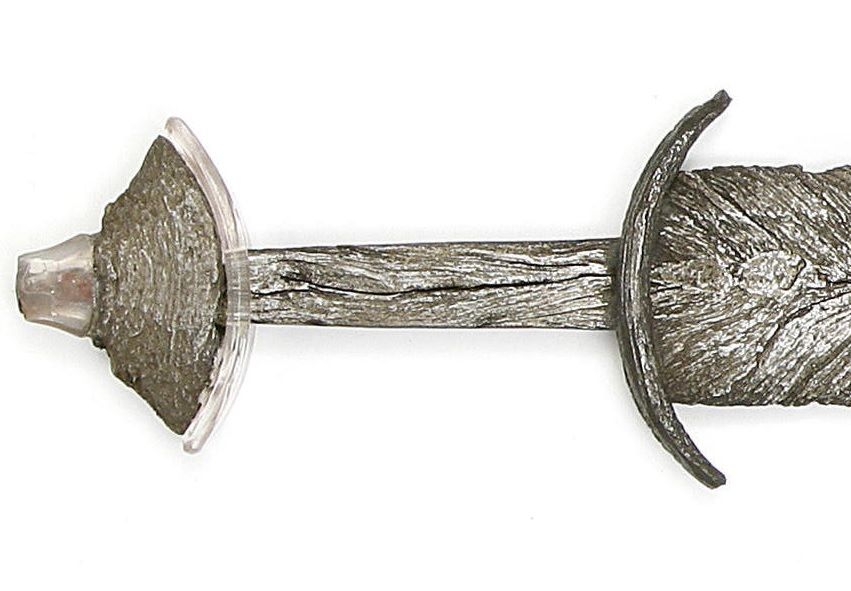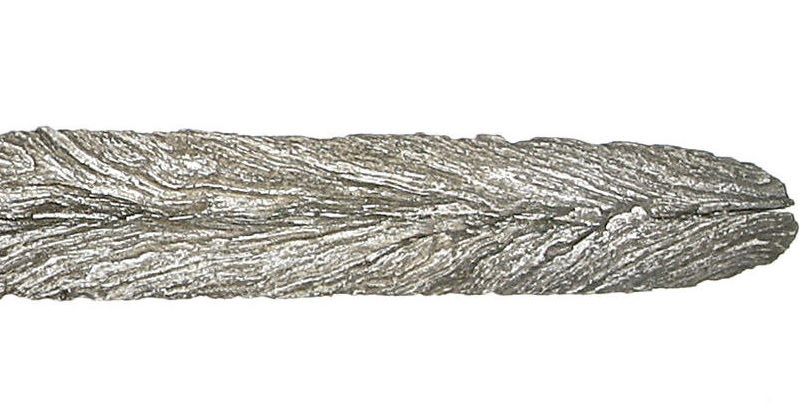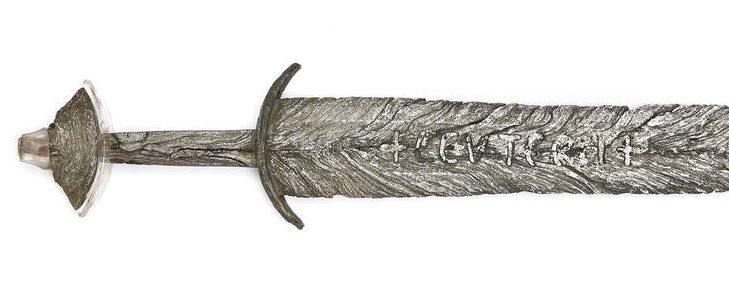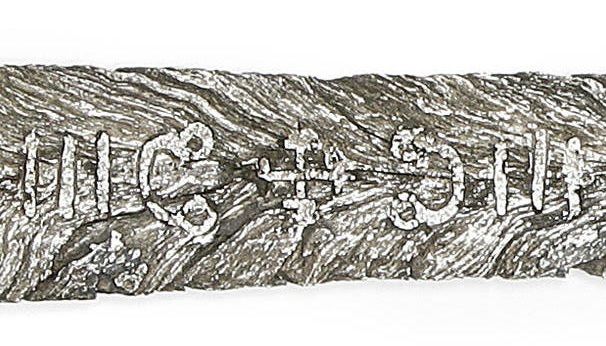Jack Loomes
Swordsperson
C.E.O. Sword-Site
Posts: 1,770 
|
Post by Jack Loomes on Aug 31, 2013 10:54:14 GMT
       Mid-9th To Mid-10th Century Mid-9th To Mid-10th CenturyIn excavated condition, with broad slightly tapering double-edged distinctly pattern-welded blade with shallow central fuller over its entire length on each side, the forte on one side inscribed '+ LEVTFR... + in inlaid iron characters, and on the other with a cross potent between omega-like devices and III-shaped iron inlays, hilt comprising short broad arched ovoidal cross-guard, flat very slightly tapering tang, and cocked-hat pommel of three-piece construction (partly replaced in perspex) 73.2 cm. blade Sold for £16,800 Footnotes: For examples of very similar markings and pattern-welding including inlaid inscriptions, see Ian Peirce, Swords Of The Viking Age, 2002, pp. 7-10, 76 (a sword of similar form in the British Museum, 1912, 7-231, found in the bank of a stream near Harbuck, Durham), and 95 (a sword in the British Museum, 1864, 1-273 with similar blade markings found in Lough Gur, near Grange, near Holycross, Co. Limerick, Ireland), and pls. I-III Two other swords with Leutfrit bladesmiths' names are recorded, one found at Almetyevo in Southern Russia and the other found in the River Witham opposite Monks Abbey, near Lincoln, Idem, p. 9, 77-79 (British Museum, 1848, 10-21 1) See also Lech Marck, Early Medieval Swords from Central and Eastern Europe, 2005, pp. 92-3, pls. 26 and 27. Source: www.bonhams.comTo see the Wheeler Typology click here: www.sword-site.com/thread/854/wheeler-typology-viking-sword-hilts |
|
.png?width=1920&height=1080&fit=bounds)